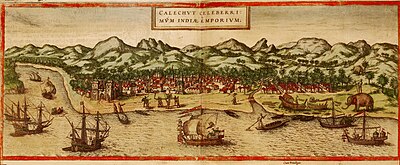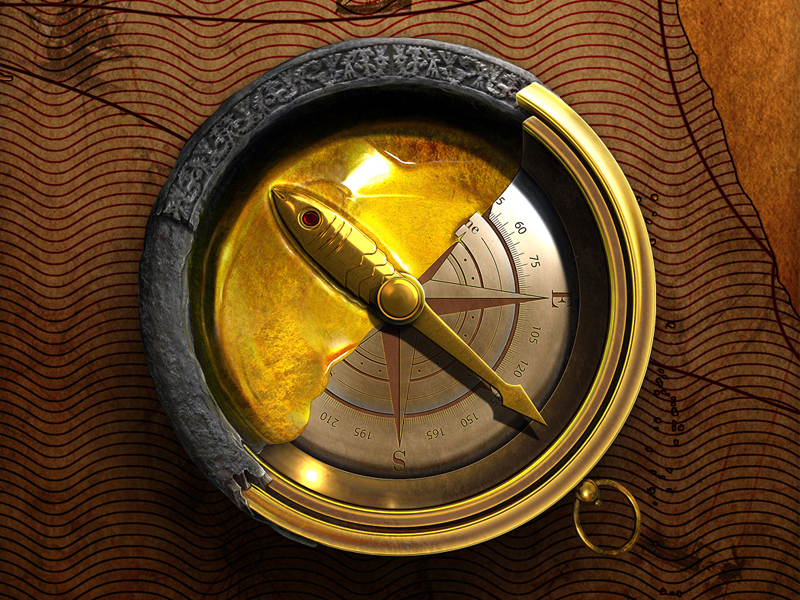
The Indian Navy traces its origins back to the East India Company's Marine which was founded in 1612 to protect British merchant shipping in the region. In this article, we will take a look at the origins of the Indian navy from the Harappan period to the end of Britishers rule.
- The world's first tidal dock was built at Lothal around 2300 BC during the Harappan Civilisation, on the Gujarat coast.
- Malan ni pothi 19th century Kutchi mariner's log book Rig Veda, written around 2000 BC, credits Varuna with knowledge of the ocean routes commonly used by ships.
 |
| Varuna was relegated to become the God of Seas and Rivers. |
 |
| Matsya Yantra |
- Two Indian astronomers of repute, Aryabhatta and Varahamihira, having accurately mapped the positions of celestial bodies, developed a method of computing a ship's position from the stars.
- A crude forerunner of the modern magnetic compass was being used around the fourth or fifth century AD. Called Matsya Yantra,
- by 5th century The Andaman and Nicobar Islands then served as an important midway point for trade between the Indian peninsula and these kingdoms, as also with China.
- The decline of Indian maritime power commenced in the thirteenth century, and Indian sea power had almost disappeared when the Portuguese arrived in India.
- The history of the Indian Navy can be traced back to 1612 when Captain Best encountered and defeated the Portuguese.
- They took complete control of the harbour in 1534 and finally ceded it to the British in 1662, under a treaty of marriage between Charles II and Infanta Catherine of Braganza.
- British physically took possession of the harbour on 8 February 1665, only to pass it on to the East India Company on 27 September 1668.
- 1686, The name of this force was changed to Bombay Marine.
Two major engagements
- The first, the Battle of Cochin in 1503, clearly revealed the weakness of the Indian navies and indicated to the Europeans an opportunity for building a naval empire.
- The second engagement off Diu in 1509 gave the Portuguese mastery over Indian seas, and laid the foundation of European control over Indian waters for the next 400 years.
- Indian ships were inducted into the Royal Navy, such as
- HMS Hindostan in 1795,
- the frigate Cornwallis in 1800,
- HMS Camel in 1806
- HMS Ceylon in 1808.
- The Bombay Dock was completed in July 1735 and is in use even today.
- The Bombay Marine was involved in combat against the Marathas and the Sidis and participated in the Burma War in 1824
- In 1830, the Bombay Marine was renamed Her Majesty's Indian Navy.
- Bombay Marine from 1863 to 1877, after which it became Her Majesty's Indian Marine.
- Royal Indian Marine in 1892,
- The prefix 'Royal' was dropped on 26 January 1950 with India being constituted as a Republic.
- On India attaining Independence, the Royal Indian Navy consisted of 32 ageing vessels suitable only for coastal patrol, along with 11,000 officers and men.
- The first Indian to be granted a commission was Sub Lieutenant D.N Mukherji who joined the Royal Indian Marine as an engineer officer in 1928.
- R Adm ITS Hall, CIE, being the first Post-independence Commander-in-Chief.
- Adm Pizey also became the first Chief of the Naval Staff in 1955
 |
| V ADM. Ram Dass Katari |
- On 22 April 1958 V Adm RD Katari assumed office as the first Indian Chief of the Naval Staff.
- Admiral Ram Dass Katari was an Indian Navy officer who served as the 3rd Chief of the Naval Staff from 22 April 1958 to 4 June 1962.
- He was the first Indian to hold the office and succeeded the last British officer to the post.

Hey, I am Aniket Rai, currently pursuing my third year CSE from Mumbai University. I'm an FE Web Developer, founder of the Radical and an ML Enthusiast. I'm a Chai Person with no sleep appetite, also I enjoy working with a team and have a heavily goal-oriented mindset. I enjoy working in the internet industry as well as I'm investing my time to learn Backend as well as Data Science.
Read More






Comments
Post a Comment